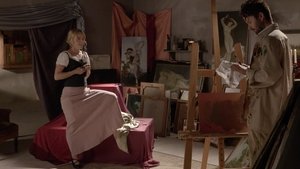Picture of Beauty – also known as Pikture of Beauty – carves a distinctive path. Set in a quaint village at the dawn of the 20th century, this film delicately unfolds a tale of burgeoning sexuality and female liberation, all observed through the discerning eyes of an artist. It’s a film that’s more than just skin deep; it’s a thoughtful exploration wrapped in a visually stunning, sensually charged package.
The premise is simple yet intriguing. A painter, tasked with a unique commission, seeks out models and finds himself drawn to two young women in the village. These aren’t seasoned performers, but rather innocent girls on the cusp of womanhood. As they pose for the artist, a fascinating dynamic emerges. The painter, with his artistic sensibility, becomes a catalyst for their self-discovery. His studio transforms into a space where societal constraints begin to loosen, allowing the girls to explore their own bodies and desires.
“Picture of Beauty” isn’t afraid to delve into the steamy aspects of this exploration. The film is decidedly explicit, depicting the awakening sensuality of these young women with a frankness that is both captivating and liberating. It’s not gratuitous; rather, the intimacy feels organic to the narrative, reflecting the characters’ journey of understanding their own sexuality in a time when such topics were heavily suppressed.
The film masterfully balances the artistic gaze with the unfolding personal journeys of the two young women. We witness their initial shyness evolve into curiosity and ultimately, into a powerful sense of self-possession. Their interactions are tender, sometimes awkward, but always imbued with a palpable sense of discovery. Through their modeling and their growing connection with each other, they find a space to experiment, to question, and to ultimately embrace their desires in a world that seeks to confine them.
“Picture of Beauty” isn’t just about physical exploration; it’s about the liberation that comes with understanding and accepting one’s own body and desires. In a repressed society, their actions become acts of rebellion, subtle yet significant. The painter, in capturing their beauty on canvas, inadvertently becomes a recorder of their burgeoning freedom. He offers them a space, and his art becomes a mirror reflecting their evolving selves.






















